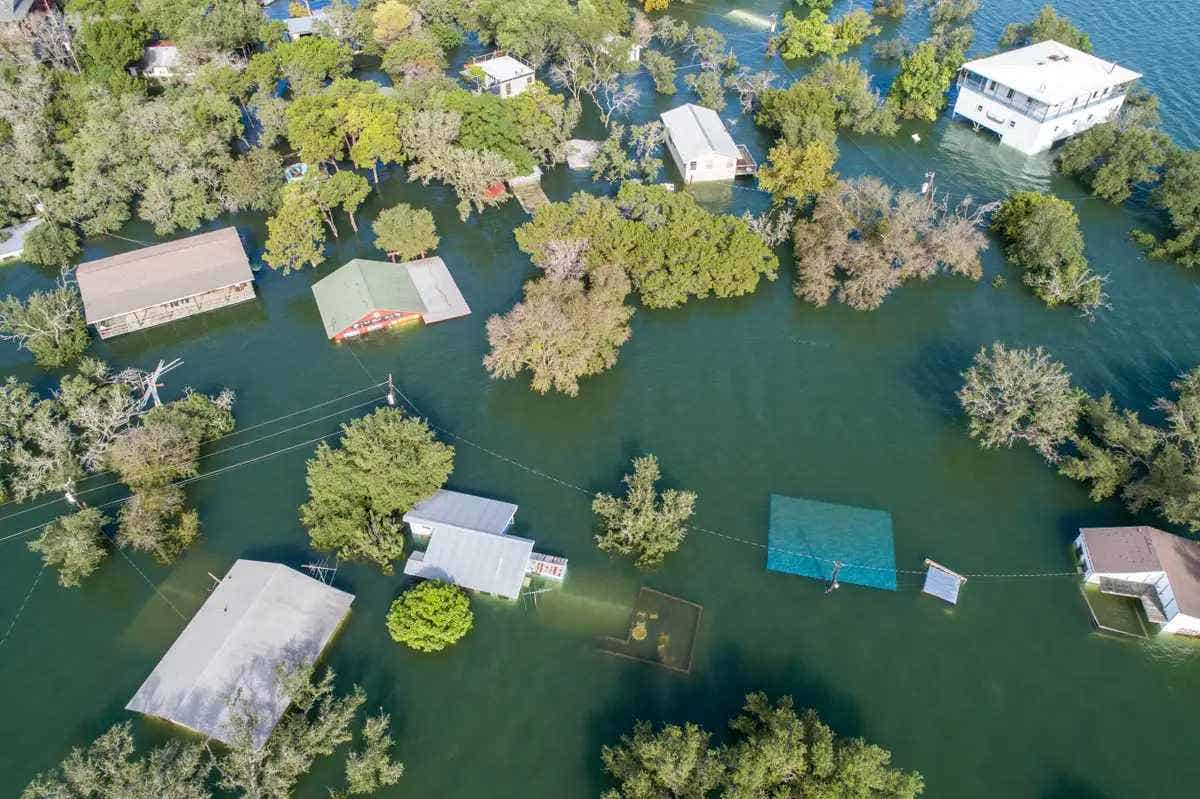Natural disasters are getting worse each year, and that leaves the most vulnerable areas and homeowners exposed to the most damage.
Approximately 4 million homes in the United States are uninsured, and about 64% of homes are underinsured - many not by choice. As the cost of coverage continues to climb, many people don’t have the financial accessibility to protect themselves.
Consider the homes of the Florida Panhandle that have been passed over by major insurers for decades now. Or the poor economic conditions in rural areas that can make insurance out of reach. It can feel as if insurance is only for those who can afford it. The reality is the family that doesn’t have the cash on hand to rebuild needs insurance the most.
So how do we make insurance more affordable for everyone?
Disasters hurt the uninsured the most
The affordability of insurance is a big problem, and so is the cost of recent disasters. The data below shows just how devastating the financial strain of going without insurance can be.
| Total Damages and Uninsured Damages for Recent Natural Disasters |
| Natural Disaster | Total Damage | Uninsured Damage |
|---|---|---|
| Hurricane Katrina | $125 billion | $45 billion |
| Camp Fire | $16.5 billion | $4 billion |
| 2019 Southern Tornadoes | $925 million | $225 million |
| Hurricane Dorian | $5.2 billion | ~$2.6 billion |
Now 15 years after Hurricane Katrina, New Orleans and its surrounding communities are still trying to rebuild. Many residents without insurance abandoned their homes and moved away where they could get jobs and start over.
A similar story plays out in the rural town of Paradise, California, which was overrun by the Camp Fire in 2018. Nearly 90 percent of the city’s structures were destroyed, and the population of 28,000 is now around 4,000. Many of these homes were uninsured and unprepared for a disaster.
The rural Florida Panhandle counties have lower insured rates than the state average. It’s estimated that 12.8 percent of owner-occupied homes don’t have homeowners insurance in Florida, whereas the national average of uninsured homes is about 5 percent.
In places like Liberty County, the rate could be even higher because only 15 percent of homes have a mortgage that would require homeowners insurance.
Some folks may think home insurance is optional when it’s not required, especially if they’re already budget-constrained or in areas where the median income is below the national average, like in Panama City, Florida. But the truth is that going without insurance only increases financial hardship.
The high cost of not having insurance
We’ve seen from past disasters that those who don’t have the money to rebuild can’t afford to not have insurance.
Let’s run some numbers. According to Home Advisor, it costs between $100 to $200 per square foot to build a typical home. If we take the median number of $150 per square foot for a 1,500-square-foot house, it takes $225,000 to build a home.
That doesn’t include the belongings inside or living expenses while the house was uninhabitable. When a family loses everything in a storm or fire, their loss could be valued well over $300,000 with moderate personal belongings and living expenses factored in. Those who don’t have the means to start over-rely on federal aid, and it isn’t much.
A federal aid program designed to help disaster victims only offers about $33,000 per household. The reality is most people get a fraction of that, averaging $8,000 or less. That’s barely enough for a couple of months of rent.
Using technology to make insurance financially accessible
Across the nation, the cost of insurance continues to rise. Currently, homeowners insurance averages $1,211 a year in the US. But states that get hit harder by natural disasters, such as Florida, pay more and more.
On average, Florida home insurance costs are the second highest in the country, thanks to hurricanes, floods, and sinkholes. In some cases, Floridians are paying two to three times the national average, taking a serious bite out of a monthly budget.
Insurance isn’t a luxury item, and it needs to be available to all homeowners, especially those most vulnerable to a total loss. We believe technology is the key to making insurance more affordable and accessible.
For starters, you shouldn’t have to go into an agent’s office to get insurance, which is taxing for those working late hours to support their families. Getting home insurance should be as easy as going online or picking up the phone. We rely on technology to replace outside agents and help us eliminate the 32 percent in premium dollars otherwise spent on administrative costs and agency infrastructure.
You also shouldn’t have to be an expert in your home’s construction to get an accurate quote. That’s why our super simple online application automatically pulls public data about your home to help us tailor your coverage.
Rather than determining your home’s risk based on your entire community, we use granular data to accurately assess every home. That means you only pay for what it costs to protect your home, not the entire ZIP code.
The result? We’re able to save homeowners $500 a year on average.
There’s always more work to do, but we are inspired to be the force of change that makes insurance readily available for all homeowners – especially those who need it most.


